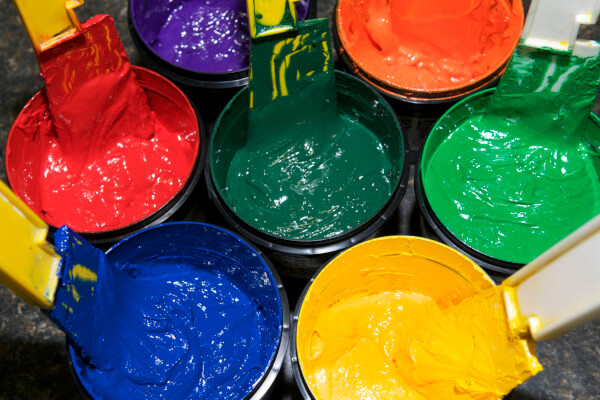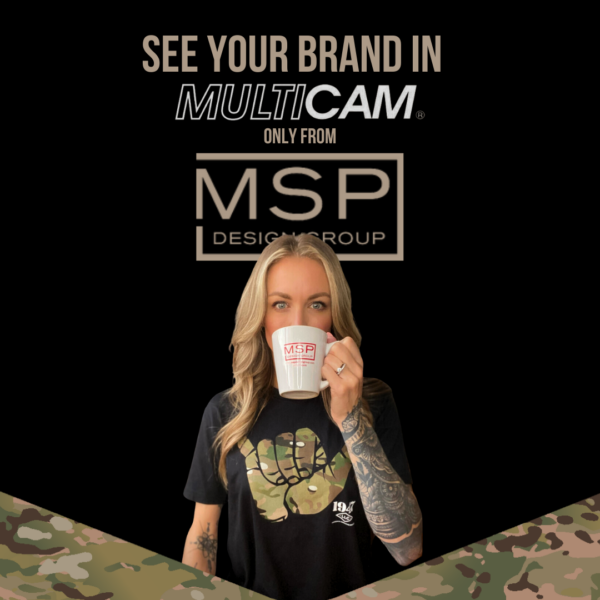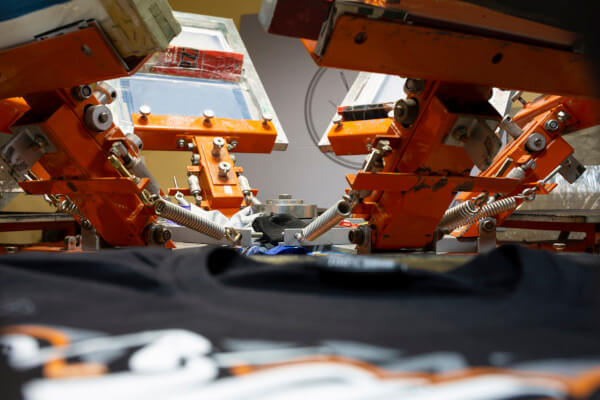
The Different Materials for Screen Printing
When you’ve been in the screen printing business for over three decades like MSP Design Group, our team has had the chance to use our unique experience to innovate, design, and produce branded products that have turned heads for years. We’re constantly perfecting what we do, and we’re always one step ahead with technology using different materials for screen printing to further our mastery of screen printing. Suppose you’re curious about all the materials we use for screen printing. In that case, whether it is the materials of the products we print on or the inks themselves that make our printed products some of the most professional quality and vibrantly painted apparel on the market today, we’d love to share them with you.
Fabrics
Thanks to today’s innovative and cutting-edge technology and our unique process with screen printing, it is now possible to achieve a crisp, professional result no matter which fabrics we print on. But some of our different fabric materials for screen printing are:
Cotton
Natural fibers are always a fantastic choice. Not only for the screen printing process, of course, but for comfort and wear too. Natural fibers like cotton tend to absorb ink more readily than most. Both professional screen printers and customers love cotton as both soft and absorbent, and organic premium kinds of cotton are often even smoother. Additionally, there are many curing processes available for silk-screening on cotton, such as air drying, drying tunnels, heat presses, or flash dry units.
Another reason why cotton fabrics for screen printing are always popular is due to the material itself. Cotton is a breathable fabric in any condition, keeping customers cool and dry. Cotton wicks away excess moisture that often leads to overheating, meaning it stays cool in summer and warm in winter. Next, cotton is still one of the most potent natural fibers, making it more durable and resistant to wear and tear than other fabrics.
Wool
Wool is a wonderfully thick fabric and soaks up screen printing colors exceptionally well. The challenge with wool is the more the texture deepens, the more the multiple crevices can become fussy with receiving ink. The thicker and smoother the wool fabric, the better absorption and crisper the screen printing, and more details can be seen. Though for a simplistic design, a textured wool piece can still turn out beautiful.
Acrylic and Polyester
Human-made or synthetic fabrics can be trickier to screen print. They are often less porous and permeable than natural fibers, so we use a special liquid called an emulsion to ensure the screen print ink sticks to them and cotton. Screen printing emulsion allows us to get ink onto synthetic fabrics efficiently and professionally, which looks vibrant and detailed as screen printing on natural materials.
Jersey
Jersey fabrics, also known as Jersey knit, are commonly a cozy and stretchy fabric created from a cotton blend. Jersey blends take on water-based paints and inks exceptionally well, providing a superior result each time. Water-based paints or inks soak quickly into the fabric for a softer yet just as vibrant true-to-color look.
Fleece
Fleece, when exposed to intense heat, has been known to shrink. To trigger shrinkage before printing, fleece undergoes a flash cure ensures that the garment is shrunk to the appropriate size well before the screen printing process applies ink. Since fleece is a thicker fabric to work with, we make sure that we use a heavier ink deposit for the best results every time. When it comes to screen printing fleece, we like to recommend clients avoid printing over seams or zippers if possible.
Inks
Plastisol
Plastisol ink is one of the most widely used ink in apparel screen printing. Plastisol consists of PVC particles suspended in a liquid plasticizer. This creates a highly durable, flexible, easy-to-use ink for the screen printing process for professionals and hobbyists alike. Plastisol is so widely used as well as popular because:
- It has excellent durability. Once the ink cures on the fabric, it is nearly impossible to chip off. It can take several years of washing before customers begin to see any cracks appear in the printing, and most often, the apparel wears out first before the printing does.
- Plastisol needs no special washing instructions for garments printed with its ink. Just wash and dry normally.
- Plastisol ink is versatile enough to be mixed easily to create any color; additionally, plastisol ink can have remarkable effects such as suede, glow-in-the-dark, glitter, shimmer, or metallic.
Water-Based
Water-based ink generally refers to any ink with uses water as a solvent base to carry pigment. But many varieties of water-based ink make up a more extensive list, from ready for use (RFU) inks to new formulations such as High Solid Acrylic (HSA) inks. Screen printing emulsion works much as plastisol ink does. When exposed to UV light, emulsion screen printing cures create a strong bond with the emulsion’s resins, hardening the emulsion and making it hold fast to screens.
- RFU or Ready for Use inks are pre-mixed and can be used directly in a multitude of colors.
- HSA water-based ink combats many of the problems older water-based inks used to encounter. HSA ink eliminates the issues older water-based inks often had, such as too thin or too transparent color. These inks have a thickening binder added to create consistency and pigment.
Emulsion
As part of the photo stencil phase of the production cycle, screen printing emulsion is the light-sensitive liquid or capillary-direct films that you coat or adhere to the degreased screen fabric before taping your film positives in place.
Three main screen printing emulsion types represent two essential chemical technologies:
- Light-reactive benzene diazonium, also known as diazo
- Styryl Basolium Quaternary salt (SBQ) based emulsions.
Of course, these are just a few examples of the different materials used in screen printing. With today’s technology and state-of-the-art machines, we’re able to do and create so much more here at MSP Design group to create head-turning, professionally printed products for customers around the globe.
Increase Your Results with Branded Merchandise Solutions

Elevate Your Brand with Custom Merchandise
Our personalized service, global sourcing, local production, and in-house creative team make finding the perfect promotional products a breeze.
Discover the Perfect Promotional Products for Your Brand! Click Here to Get Started.

Design Custom Apparel that People Love to Wear
Our 100,000 sq ft state-of-the-art facility handles a wide range of apparel and decoration methods. Let’s create something on-trend and truly unique for your brand.
Create Trendy, Custom Apparel for Your Brand!

Make A Lasting Impression with Impactful Visual Communications
From signage and wayfinding to environmental graphics, our expert team can create custom solutions that elevate your brand and guide your audience.
Elevate Your Brand with Custom Visual Communications! Click Here to Learn More.
 Online Solutions to Elevate Your Brand
Online Solutions to Elevate Your Brand
Our ecommerce solutions are perfect for gifting, rewards and recognition programs, team gear, fundraising, or selling your products directly to customers. Our advanced platforms offer seamless shopping experiences, fun gifting options, and secure transactions.
Boost Your Brand with Our Ecommerce Solutions! Click Here to Explore.
 We Do the Heavy Lifting So You Don’t Have To
We Do the Heavy Lifting So You Don’t Have To
MSP Design Group provides an in-house, NetSuite enabled kitting, warehouse and fulfillment facility. We provide end-to-end solutions tailored to your unique needs. With complete control of our processes, your program is in excellent hands.
Streamline Your Operations with Our End-to-End Solutions!
 Our In-House Creative Team Has You Covered
Our In-House Creative Team Has You Covered
Looking to create your own unique apparel designs? Envision a unique product that doesn’t exist yet? Want to create a new experience? MSP Design Group’s team of in-house creatives, designers, merchandisers and program experts are ready to help bring your vision to life.
Bring Your Vision to Life with Our In-House Creative Team! Click Here to Learn More.






